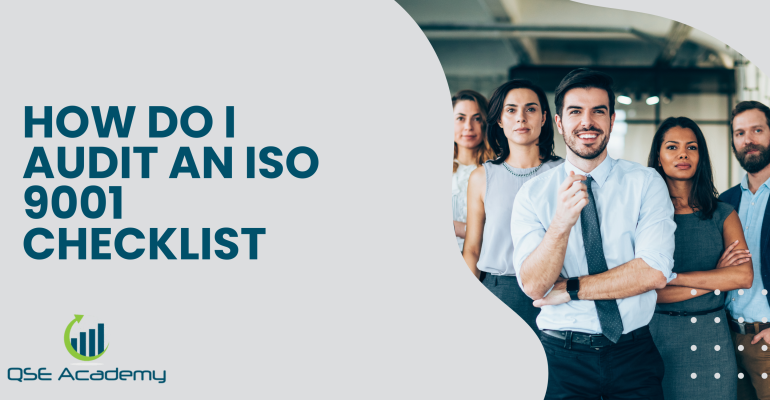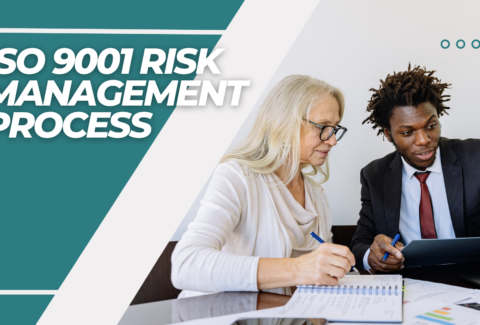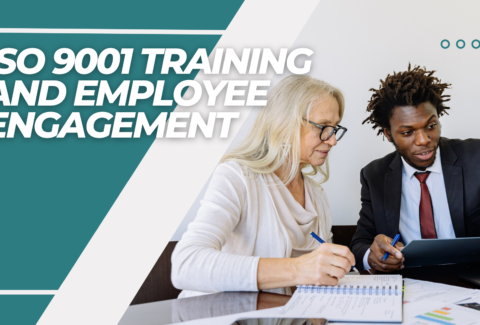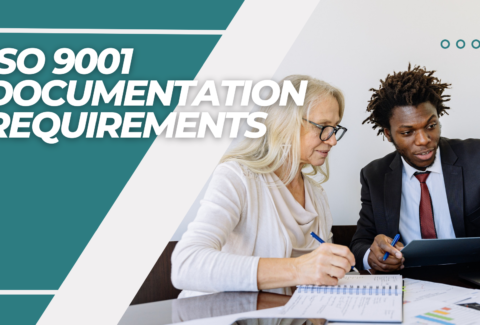How do I audit an ISO 9001 checklist?
How do I audit an ISO 9001 checklist?
So, you’re getting ready for an ISO 9001 audit, and you want to make sure everything runs smoothly. You’ve heard that using a checklist can help, but you might be wondering—how exactly do you audit an ISO 9001 checklist? Don’t worry, you’re not alone!
Auditing an ISO 9001 checklist is a crucial step in ensuring your Quality Management System (QMS) meets the necessary standards. Whether you’re performing an internal audit to prepare for certification or reviewing your processes for continuous improvement, a well-structured checklist makes the job easier, more organized, and more effective.
But here’s the thing—a checklist isn’t just about ticking boxes. It’s a tool to help you uncover strengths, identify gaps, and drive real improvements in your organization. In this article, we’ll walk you through how to effectively audit an ISO 9001 checklist, from preparation to execution, so you can ensure compliance and enhance your quality processes.
Ready? Let’s dive in and make your next audit a success!
What Is an ISO 9001 Audit and Why Is It Important?
Before we jump into how to audit an ISO 9001 checklist, let’s take a step back and talk about why ISO 9001 audits matter in the first place. Whether you’re preparing for certification, checking for ongoing compliance, or simply improving your processes, audits are a powerful tool for ensuring that your Quality Management System (QMS) is working effectively.
Understanding the Purpose of an ISO 9001 Audit
An ISO 9001 audit is like a health check-up for your business. Just as doctors use check-ups to make sure everything in your body is running smoothly, an ISO 9001 audit ensures that your company’s processes, policies, and quality controls are in good shape. The goal isn’t just to find mistakes—it’s to identify areas for improvement and keep your business running efficiently.
When you audit an ISO 9001 checklist, you’re looking for:
✅ Compliance with ISO 9001 requirements
✅ Areas where processes could be more efficient
✅ Risks or inconsistencies that need to be addressed
✅ Opportunities for continuous improvement
Audits aren’t about pointing fingers or finding faults. Instead, they help businesses stay proactive, refine their operations, and build stronger, more reliable systems.
The Role of a Checklist in an ISO 9001 Audit
Now, let’s talk about the importance of using a checklist in an ISO 9001 audit.
A well-structured checklist is your roadmap to success. It ensures that you don’t overlook critical requirements and helps auditors stay focused and organized. Think of it like a grocery list for quality management—you wouldn’t go shopping without a list, right? The same logic applies when performing an audit!
When you audit an ISO 9001 checklist, you’re following a step-by-step guide to:
✅ Verify that all necessary ISO 9001 clauses are being met
✅ Keep track of evidence and documentation for compliance
✅ Ensure that employees are following established procedures
✅ Identify gaps or inconsistencies that need to be corrected
Without a checklist, it’s easy to miss important details or get sidetracked. But with a checklist, you can confidently work through each audit step in a clear, structured way.
Why Every Business Should Regularly Audit an ISO 9001 Checklist
Regular audits help businesses stay compliant, improve efficiency, and maintain high standards. Whether you’re preparing for an external certification audit or simply conducting an internal review, using a checklist ensures that your audit is thorough, efficient, and effective.
In the next section, we’ll dive into how to prepare for an ISO 9001 audit using a checklist, so you can be fully equipped for success. Let’s get started!
Preparing to Audit an ISO 9001 Checklist
Now that we understand why audits are essential, let’s talk about how to prepare to audit an ISO 9001 checklist effectively. A well-prepared audit not only helps ensure compliance but also makes the process smoother, more efficient, and stress-free.
If you’re wondering where to start, don’t worry—I’ve got you covered. Here’s what you need to do before you begin your audit.
1. Gather the Necessary Documents
Before you dive into the audit, you’ll need to collect all relevant documents that provide evidence of your organization’s compliance with ISO 9001. These documents will help you verify whether processes are being followed correctly.
Here’s what to gather before you audit an ISO 9001 checklist:
✅ Quality Manual – Outlines the company’s quality policies and objectives.
✅ Process Documentation – Includes work instructions, procedures, and operational workflows.
✅ Training Records – Verifies that employees are properly trained and competent in their roles.
✅ Internal Audit Reports – Provides insights into previous audits and any identified issues.
✅ Corrective and Preventive Action Logs – Tracks how the company addresses non-conformities and improves processes.
Having these documents ready will save time and ensure that the audit process runs smoothly.
2. Define the Audit Objectives and Scope
Before you audit an ISO 9001 checklist, it’s important to define your objectives. Ask yourself:
🔍 What is the purpose of this audit? – Are you conducting an internal audit to identify areas for improvement, or is this a preparation for an external certification audit?
🔍 Which areas will be covered? – Will the audit focus on specific departments, processes, or the entire organization?
🔍 What are the key ISO 9001 clauses to review? – Ensure that your checklist covers important sections such as leadership, risk management, operational controls, and customer satisfaction.
Setting clear objectives helps keep the audit focused and effective, ensuring that nothing important is missed.
3. Select the Right Auditors
An audit is only as good as the people conducting it. Whether you’re part of an internal audit team or hiring an external auditor, you’ll want to choose auditors who are:
✅ Objective and impartial – They should not audit their own work or department.
✅ Knowledgeable about ISO 9001 – They should understand the standard and its requirements.
✅ Detail-oriented – Auditors should be able to spot gaps and inconsistencies.
✅ Strong communicators – Auditors should be able to interview employees and document findings clearly.
Selecting the right team ensures that your audit is thorough, fair, and insightful.
4. Review and Customize Your Audit Checklist
Now it’s time to review your ISO 9001 audit checklist and make sure it’s tailored to your organization’s needs. While there are many templates available, it’s best to customize the checklist to match your specific processes and business operations.
A well-structured checklist should:
✅ Cover all relevant ISO 9001:2015 clauses
✅ Include space to document evidence and findings
✅ Allow for notes on non-conformities and areas of improvement
✅ Provide a clear format for rating compliance
When you take the time to refine your checklist, you set yourself up for a more productive and valuable audit.
5. Notify Teams and Set a Schedule
The last step in preparation is informing relevant teams about the audit and scheduling a time that minimizes disruption.
✅ Let employees know what to expect – Ensure that teams understand the audit’s purpose and are prepared to provide information.
✅ Set a realistic timeline – Audits should be thorough but efficient; avoid rushing through key areas.
✅ Encourage a positive mindset – Remind employees that audits are about improvement, not punishment.
By preparing ahead of time, you’ll make it easier to audit an ISO 9001 checklist efficiently while keeping the process stress-free for everyone involved.
Next Up: How to Conduct an ISO 9001 Audit Step by Step
With your preparations complete, you’re ready to dive into the actual audit process. In the next section, we’ll go through the step-by-step approach to auditing an ISO 9001 checklist, ensuring that you cover all critical areas and get the most out of your audit. Let’s get started!
Steps to Audit an ISO 9001 Checklist Effectively
Now that you’ve done all the prep work, it’s time to get down to business! But how exactly do you audit an ISO 9001 checklist in a way that’s structured, effective, and insightful? A checklist is a great tool, but it’s how you use it that truly makes a difference.
In this section, we’ll walk through the step-by-step process to ensure your audit runs smoothly and delivers real value to your organization.
Step 1: Review the Checklist Against ISO 9001 Requirements
Before you start the audit, take a moment to go through your checklist and make sure it aligns with the core requirements of ISO 9001:2015. Each clause of ISO 9001 focuses on a different aspect of quality management, such as:
✅ Leadership and Commitment – Are top managers actively involved in quality initiatives?
✅ Risk-Based Thinking – Has the company identified and addressed potential risks?
✅ Process Control – Are procedures being followed consistently across departments?
✅ Customer Satisfaction – Is feedback being collected and used for improvements?
By ensuring that your ISO 9001 audit checklist covers these essential elements, you can confidently move forward with the audit.
Step 2: Conduct the Audit and Gather Evidence
Now comes the main event—going through the audit checklist, step by step, and gathering evidence to verify compliance. Here’s how to approach this stage:
🔍 Observe Processes in Action – Watch how employees perform their tasks and check if they are following documented procedures.
📝 Review Documents and Records – Verify that quality manuals, work instructions, and training records are accurate and up to date.
🎤 Interview Employees – Ask team members questions about their roles, processes, and understanding of ISO 9001 requirements. A simple approach could be:
- “How do you ensure quality in your daily tasks?”
- “What do you do if you spot a mistake or non-conformity?”
📊 Check for Consistency – Compare what’s written in procedures with what’s actually happening on the ground. Do they match? If not, why?
The goal here isn’t to catch mistakes but to understand how well the system is working and where it can be improved.
Step 3: Identify Non-Conformities and Areas for Improvement
As you audit an ISO 9001 checklist, you may come across gaps, inconsistencies, or inefficiencies. These are called non-conformities—instances where the company isn’t fully meeting ISO 9001 requirements.
There are two types of non-conformities:
🚨 Major Non-Conformities – Serious issues that significantly impact quality or compliance. These might include missing procedures, lack of leadership involvement, or repeated customer complaints.
⚠️ Minor Non-Conformities – Smaller inconsistencies that don’t directly impact product or service quality but still need to be addressed, such as outdated documents or incomplete training records.
Make sure to document every finding and suggest realistic corrective actions to address the issues.
Step 4: Review Findings and Report Results
After completing the checklist, it’s time to summarize your findings and communicate them effectively.
Your audit report should include:
📌 A summary of what was reviewed (departments, processes, documents, etc.)
📌 Key observations and positive findings (what’s working well)
📌 Identified non-conformities (major and minor issues)
📌 Recommendations for improvement (practical solutions)
Sharing these findings with leadership and relevant teams ensures that everyone understands the results and can take action where needed.
Step 5: Follow Up and Implement Corrective Actions
An audit isn’t complete until corrective actions have been taken to resolve any identified issues. The final step in auditing an ISO 9001 checklist is ensuring that improvements are implemented, monitored, and sustained over time.
✅ Set deadlines for corrective actions and assign responsibilities.
✅ Conduct follow-up reviews to confirm that changes have been made.
✅ Use audit findings as a learning opportunity to continuously enhance your QMS.
ISO 9001 is all about continuous improvement, so treating audits as an ongoing process—not a one-time event—helps businesses grow stronger over time.
Final Thoughts on Conducting an ISO 9001 Audit
When done right, an ISO 9001 audit is a powerful tool for improving quality, efficiency, and customer satisfaction. By following a structured checklist, gathering evidence, and identifying areas for improvement, businesses can make real, lasting changes that strengthen their Quality Management System.
In the next section, we’ll discuss common mistakes to avoid when auditing an ISO 9001 checklist—because even the best audits can go off track without the right approach. Let’s keep going!
Common Mistakes to Avoid When Auditing an ISO 9001 Checklist
Auditing an ISO 9001 checklist is a powerful way to ensure your Quality Management System (QMS) is working effectively. But let’s be honest—mistakes can happen, and they can make the process less effective than it should be. The good news? Most of these mistakes are easy to avoid once you know what to watch out for.
If you want to audit an ISO 9001 checklist successfully, be mindful of these common pitfalls and how to steer clear of them.
1. Overlooking Key Processes or Departments
One of the biggest mistakes in an ISO 9001 audit is focusing too much on certain areas while ignoring others. Some teams may already have strong quality processes in place, making their audits easier, while others may be struggling but receive less attention.
✅ Solution: Make sure your audit checklist covers all relevant departments and processes. Don’t just focus on the easiest or most obvious ones—take a balanced approach to get a full picture of your QMS.
2. Treating the Checklist as Just a Formality
A checklist is a fantastic tool for structuring your audit, but it should never become just a box-ticking exercise. If you’re only going through the motions to get it done, you’re missing out on valuable insights that could help improve your business.
✅ Solution: Use the checklist as a guide, not a shortcut. Engage with employees, observe real processes in action, and ask thoughtful questions to understand how quality is managed on a daily basis.
3. Focusing Only on Compliance Instead of Improvement
Yes, ISO 9001 audits are meant to check compliance with the standard, but that’s not the only goal. Audits should also be used to identify ways to improve efficiency, reduce waste, and enhance customer satisfaction.
✅ Solution: When you audit an ISO 9001 checklist, don’t just ask, “Is this being done?”—also ask, “Is this the best way to do it?” Encourage a mindset of continuous improvement rather than just passing an audit.
4. Lack of Clear Communication with Teams
Audits shouldn’t feel like a mystery investigation. If employees don’t understand why the audit is happening or what’s expected, they might feel stressed or defensive, which can lead to incomplete or inaccurate information.
✅ Solution: Before the audit, explain the process to employees. Let them know:
- What the audit is for
- What they should prepare
- How it helps the company improve
Making employees feel informed and involved will lead to better cooperation and more accurate findings.
5. Ignoring Employee Feedback
Employees on the ground know the processes best. If something isn’t working efficiently, they’re usually the first to notice. But too often, audits focus only on documentation and overlook real-world insights from employees.
✅ Solution: When you audit an ISO 9001 checklist, make it a conversation! Ask employees:
- “What challenges do you face with this process?”
- “Do you have any suggestions for making things more efficient?”
Their input can uncover hidden issues and lead to meaningful improvements.
6. Not Following Up on Non-Conformities
Finding non-conformities (issues that don’t meet ISO 9001 requirements) is normal—but failing to follow up and correct them is a serious mistake. If non-conformities aren’t addressed, they can lead to bigger problems in the future.
✅ Solution: After the audit, ensure that:
- Corrective actions are assigned to the right people
- A timeline for resolution is set
- A follow-up check is scheduled to confirm improvements
ISO 9001 is about continuous improvement, and that only happens when issues are resolved properly.
7. Not Conducting Regular Audits
Auditing once a year just to meet certification requirements isn’t enough. ISO 9001 is designed to be an ongoing process, meaning audits should be conducted regularly to identify opportunities for continuous improvement.
✅ Solution: Schedule frequent internal audits (quarterly or bi-annually) to:
- Catch issues before they become serious problems
- Keep teams engaged in quality management
- Maintain a strong culture of improvement
Regular audits help businesses stay ahead and ensure that ISO 9001 compliance isn’t just a one-time event—it’s a long-term commitment.
Final Thoughts: Making Your ISO 9001 Audits Count
Avoiding these mistakes will make your ISO 9001 audits more effective and valuable. Remember, the goal isn’t just to pass an audit—it’s to make real improvements that benefit your business, employees, and customers.
In the next section, we’ll look at how to make ISO 9001 audits easier and more efficient, including tips for using digital tools, engaging employees, and making audits a smooth, stress-free process. Let’s keep going!
How to Make ISO 9001 Audits Easier and More Effective
By now, you know how to audit an ISO 9001 checklist and what mistakes to avoid. But let’s be honest—audits can sometimes feel overwhelming, especially if you’re dealing with complex processes, large teams, or tight deadlines.
The good news? With the right approach, you can make ISO 9001 audits smoother, faster, and more effective—without the stress! Here are some practical strategies to help you streamline your audit process and get the most value out of it.
1. Use Digital Tools to Simplify the Process
Gone are the days of flipping through stacks of printed checklists and handwritten notes. If you want to audit an ISO 9001 checklist more efficiently, consider using digital tools to track findings, automate reports, and manage corrective actions.
✅ Audit management software – Platforms like Intelex, Qualio, or AuditBoard help streamline audits, track issues, and generate reports automatically.
✅ Cloud-based checklists – Google Forms, Microsoft Teams, or specialized quality management apps allow real-time collaboration, making audits more interactive.
✅ Mobile audit apps – These let auditors capture evidence, take photos, and document findings on the go—no more messy paperwork!
Using technology not only saves time but also ensures that audit records are more accurate, accessible, and easy to track.
2. Make Audits a Routine (Not a Once-a-Year Event)
Many companies only audit an ISO 9001 checklist when a certification audit is approaching. But that approach can lead to last-minute stress and rushed corrections. Instead, make regular internal audits part of your routine.
✅ Schedule quarterly or biannual audits – Regular internal audits help identify small issues before they become big problems.
✅ Encourage departments to self-audit – This keeps teams engaged and ensures continuous improvement.
✅ Review past audits – Look at previous findings and track improvements over time.
When audits are part of your normal operations, they feel less like an inspection and more like a valuable tool for growth.
3. Train Employees to Be Audit-Ready
One of the easiest ways to audit an ISO 9001 checklist smoothly is to ensure that everyone understands their role in quality management. When employees feel confident about ISO 9001 processes, audits become much easier.
✅ Provide regular ISO 9001 training – Teach employees the basics of quality management and what auditors look for.
✅ Conduct mock audits – These help employees get comfortable with answering questions and demonstrating compliance.
✅ Foster a culture of quality – When employees see audits as an opportunity (not a punishment), they’re more engaged and open to improvement.
A well-trained team makes audits faster, smoother, and more productive.
4. Focus on Improvement, Not Just Compliance
It’s easy to approach an audit as a pass-or-fail test, but that’s not the true goal. The purpose of an ISO 9001 audit isn’t just checking off boxes—it’s about finding ways to improve and refine business processes.
✅ Look beyond compliance – Ask: How can we make this process even better?
✅ Encourage feedback from employees – Often, the best improvement ideas come from the people doing the work every day.
✅ Track progress over time – Use past audits as a benchmark to measure improvements.
When businesses see audits as an opportunity for growth, they get real value from the process instead of just “getting through it.”
5. Keep Audit Reports Clear and Actionable
One of the most frustrating parts of auditing is getting vague or unclear findings. If an audit report is too complicated or lacks specific action steps, it won’t be useful.
✅ Use simple, clear language – Avoid technical jargon—make reports easy to understand.
✅ Provide examples – Instead of just noting a non-conformity, explain what happened and why it matters.
✅ Assign responsibilities – Clearly state who is responsible for each corrective action and set deadlines.
An effective audit report should give clear guidance on what to fix, improve, or refine—not leave teams guessing.
Final Thoughts: Making Audits Work for You
When done right, auditing an ISO 9001 checklist doesn’t have to be stressful or complicated. By leveraging digital tools, training employees, focusing on continuous improvement, and simplifying reports, you can turn audits into a powerful tool for growth and success.
In the next (and final) section, we’ll wrap up with a summary of everything we’ve covered and why effective auditing is key to maintaining a strong ISO 9001 system. Let’s bring it all together!
Conclusion: Why Effective Auditing Matters for ISO 9001 Compliance
We’ve covered everything you need to know about how to audit an ISO 9001 checklist, from preparation and execution to avoiding common mistakes and making the process smoother. But let’s take a step back and ask: Why does auditing matter so much?
The truth is, auditing isn’t just about passing a certification or checking a box—it’s about ensuring quality, improving processes, and strengthening your business. A well-executed audit helps organizations:
✅ Identify gaps and inefficiencies before they turn into bigger problems.
✅ Ensure compliance with ISO 9001 standards and avoid non-conformities.
✅ Improve customer satisfaction by maintaining high-quality standards.
✅ Encourage a culture of continuous improvement instead of just meeting minimum requirements.
When you audit an ISO 9001 checklist regularly and effectively, your business stays proactive, adaptable, and always moving forward.
Key Takeaways from Auditing an ISO 9001 Checklist
🔹 Preparation is key – Gather documents, define audit objectives, and communicate with employees.
🔹 Use checklists wisely – They should guide the audit, not replace critical thinking.
🔹 Focus on improvement, not just compliance – Audits should lead to meaningful changes.
🔹 Engage employees – Their insights and cooperation make audits more valuable.
🔹 Follow up on findings – Implement corrective actions and track progress.
By following these principles, businesses can turn audits into a valuable tool for success rather than a stressful obligation.
Final Thoughts: Make Auditing Work for You
If you’re about to audit an ISO 9001 checklist, remember this: audits aren’t just about finding problems—they’re about making things better. Whether you’re conducting an internal review or preparing for a certification audit, a structured, thoughtful approach will ensure that your business meets standards, improves efficiency, and delivers better results.
ISO 9001 is all about continuous improvement, and audits are one of the best ways to make sure you’re always moving in the right direction. So, embrace the process, stay proactive, and use every audit as an opportunity to grow.
Are you ready to audit an ISO 9001 checklist with confidence? Let’s get started and make quality a lasting part of your business!
Looking for More Resources on ISO 9001?
Looking for ISO 9001 Resources Tailored to Your Industry?
If this article helped clarify ISO 9001, take the next step with our industry-focused tools designed to simplify your certification journey:
📦 ISO 9001 Documentation Kits by Industry: Whether you’re in manufacturing, construction, consulting, or healthcare — we have complete, ready-to-use documentation tailored for your sector.
🎓 Online ISO 9001 Training: Learn how to implement ISO 9001 effectively with our easy-to-follow video lessons, real-world examples, and practical exercises.
📋 ISO 9001 Checklist: Download our step-by-step checklist to ensure your QMS meets all the 9001:2015 requirements from start to finish.
These resources are crafted to save you time, reduce stress, and help you achieve certification with confidence. Choose your industry and start now!

make ISO standards less intimidating and more approachable for everyone.
Whether it’s ISO 9001, ISO 22000, or the cosmetics-focused ISO 22716,
I’ve spent my career turning complex jargon into clear, actionable steps
that businesses can actually use. I’m not here to call myself an expert—I prefer “enthusiast” because I truly love what I do.
There’s something incredibly rewarding about helping people navigate food safety and quality management systems
in a way that feels simple, practical, and even enjoyable.
When I’m not writing about standards, you’ll probably find me playing Piano 🎹, connecting with people, or diving into my next big project💫.
- I’m an engineer specialized in the food and agricultural industry
- I have a Master’s in QHSE management and over 12 years of experience as a Quality Manager
- I’ve helped more than 15 companies implement ISO 9001, ISO 22000, ISO 22716, GMP, and other standards
- My clients include food producers, cosmetics manufacturers, laboratories, and service companies
- I believe quality systems should be simple, useful, and efficient
- Outside of work, I play piano and love learning something new every day
Let’s make ISO less about stress and more about success! 🙏






















